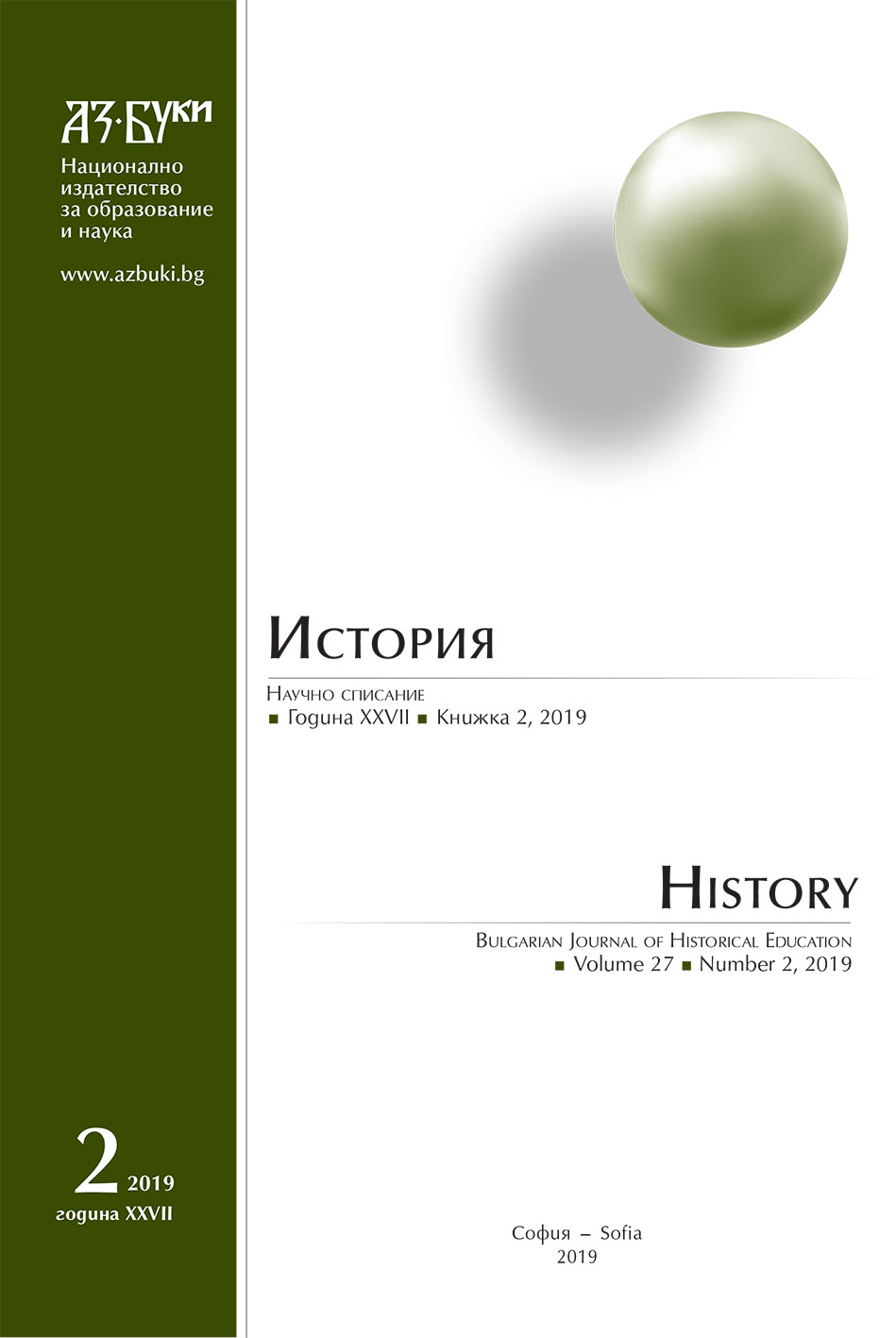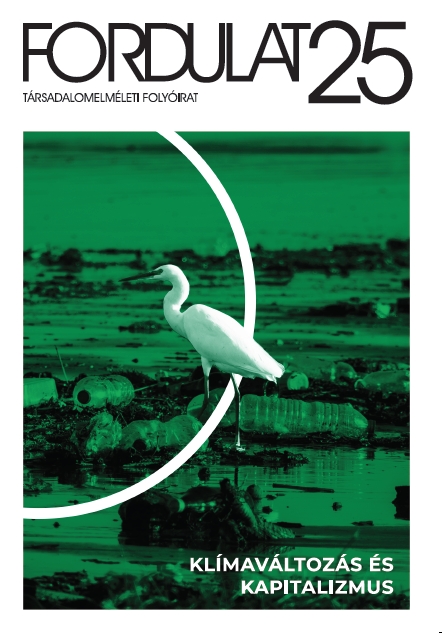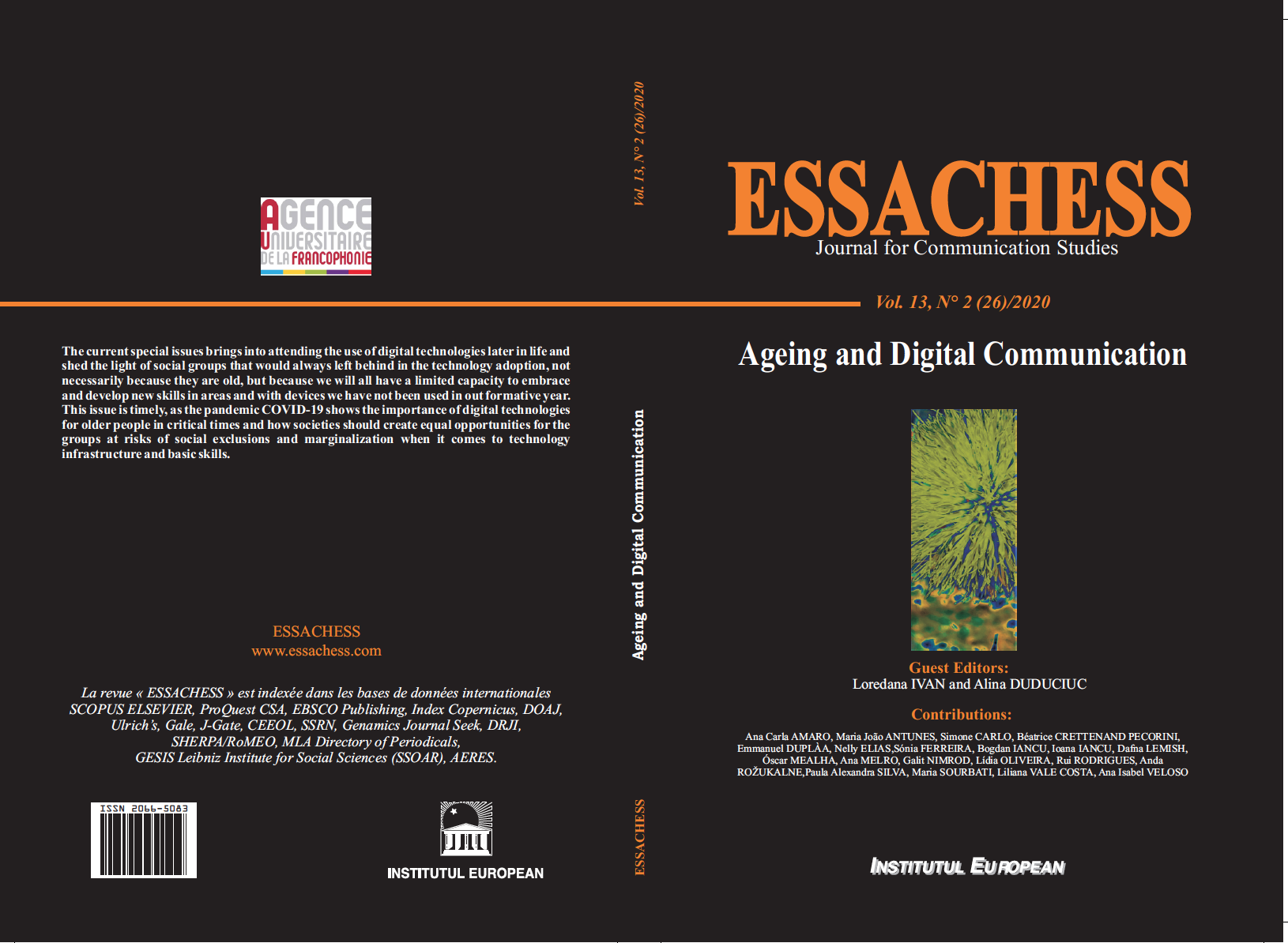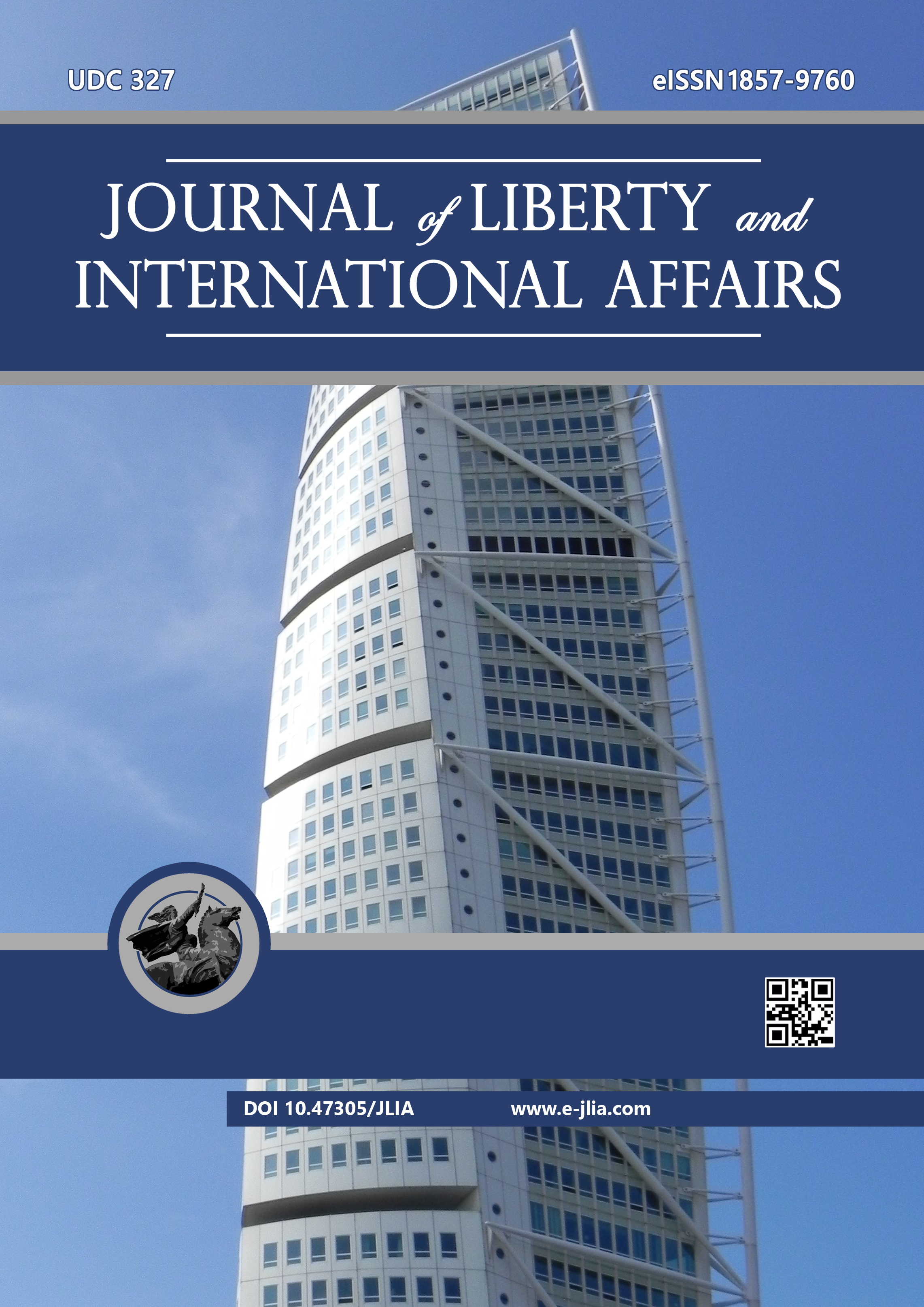
We kindly inform you that, as long as the subject affiliation of our 300.000+ articles is in progress, you might get unsufficient or no results on your third level or second level search. In this case, please broaden your search criteria.




The article is part of a series of observations related to the problem of the identity construction of the Easteauropean emigrants/immigrants “in the West” (Europe andUSA) before and after the “democratic changes”. Here, the author examines the first case (the second one is published in the second volume of the thematic issue “The Road”) which is based on materials from Estonia. The article shows the specifics of the Estonian labour mobility to Scandinavia in the context of the identification “main stays” developed by the Estonian society and related to the so-called popular religion and the neo-paganism which form a “working” national narrative.The article is based on the fieldwork of the author, published sources and Internet materials.
More...
The migrations of the Turks from Bulgaria to Turkey in the 20th century are subject of broad academic and pubic discussions; the greatest attention is paid to the last wave of migration of 1989. The article directs the attention further back in the history, to the period from 1950 to 1951 when the Bulgarian and Turkish authorities organized for the first time a mass deportation of over 150 000 Turks. The study discusses the macro and micro framework of that migration flow in the light of the scientificanalytical approach of histoire croisée/entangled history. By means of it, the author analyses the “entangled” policies presented on the basis of Bulgarian, Turkish and other historical sources and compared to ethnographic fieldwork materials collected among the Bulgarian migrants in the city of Izmir. The study works out new issues and issues insufficiently examined of the written and oral history of the Turkish migrants related to the ideas of homeland, the influence of social and kin networks and the reconstruction of identity in the processes of migration, adaptation and integration.
More...
The article seeks to ascertain whether and to what extent the state policy of “care” and “protection” of the family, woman-mother, children and youth in the period of socialism in Bulgaria is the result of the paternalism and populism typical of the Bulgarian socialist model.
More...
Russia has always been making efforts to define itself, since the rule of Peter I, and even earlier, by comparing itself to Kievan Rus and the Grand Duchy of Moscow. Russia has always managed to revive itself as a country, though always different, but the question remained – was Russia the East or the West, or was it something else, no matter how old it was? In all respects, Russia is Europe and its place is in Europe but the way it is governed always pushes the country toward the East.
More...
Muslims in Switzerland are the third largest religious group. However, they are not legally recognized as a religion. The Swiss state is confronted with the necessity of their integration and the problem is constantly present in politics. It is a fact, that the regional differences between Muslims and other religions in Switzerland are very large. The results of referendums regarding the acceptance of the Muslim religion have been in the past only negative. The best example is the initiative and referendum „stop of minarets” in 2009. From a legal point of view, the presence of Muslims in Switzerland provokes many challenges for the Swiss state, because the systems of these two „worlds” are fundamentally different: Muslim law is based on the Islamic religion, while the Swiss Confederation is a democratic state of law and as such is based on the will of society. Recognition of Muslims as a religious minority can take place within the framework of Swiss direct democracy only in the referendum, which is currently impossible.
More...
Rebecca Solnit has published her book "A Paradise Built in Hell" ten years ago. Its main idea was originally formulated in 2005 in an essay published on the day when Hurricane Katrina reached New Orleans. Rebecca Solnit is writer, historian and activist living in San Francisco; she has been working in various environmental, anti-war, human and women's rights movements since the 1980s. She has published 17 books so far and is a regular author of Guardian and Harpers' Magazine. In her works she continues the tradition of American progressive public intelligentsia: although she relies on historical facts and social science research, she primarily outlines perspectives to expand sociological imagination (Mills 1959) on challenges that cannot be solved by the social knowledge produced within the current social order.
More...
Islam provides a perfect environment for the fast development of the Sharia law and the customary laws despite strong secularization efforts and pressure exercised by the government authorities. The Ottoman Empire was a multicultural society based on the principles of the Sharia law. The abolishment of the caliphate in Turkey and enforcement of the monogamy model of a family through the Kemalist revolution penalized the parallel Islam activities. After the collapse of the Ottoman Empire the millet system survived in Syria with its legal pluralism. Polygamy is currently on the rise in Syria as many men left the country or got killed in the fighting. The mass influx of Syrian women to Turkey results in the growth of parallel Islam de facto polygamous marriages in Turkey. The refugee women are looking for protection within the Sharia law family model, and the living law bypassed the Kemalist positive law secular principles. The same trend is visible in the countries that received many Muslim women that were claiming to the UNHCR their well-founded fear of persecution due to alleged transgressing of traditional social mores in their countries of origin. The same individuals sought later support and protection within the informal and effective parallel Islam networks in the resettlement countries. The legal pluralism is on the rise in the traditionally secular cultures due to the mass migration of single women preferred by the selection systems and resettlement criteria as agreed between UNHCR adjudicators and immigration authorities worldwide.
More...
ociety is ageing at an unprecedented pace. In tandem, the number of technology-enabled solutions targeted at older adults continues to rise. It is therefore important to understand how to best communicate these solutions to seniors and facilitate use and adoption. To develop an understanding of what could be an improved strategy of communication and media content delivery for companies that provide older adults with technology-based solutions is the goal of this research. Aware of the potential stereotypes that may emerge towards the ageing population, this paper takes a special interest on ageism and gender to determine imbalances. With this in mind, this paper conducts an in-depth case study of the online presence of a company that developed a digital product for seniors that has been nominated for a Prize on Best Practice on Active and Healthy Ageing. Findings concerning the communication strategy of the company are extracted based on the analysis of their website and their five social media profiles. In total 120 posts were inspected, containing 120 text excerpts, 352 pictures, and 21 videos. Results show that the organisation sustains a continuous engagement with both seniors and the seniors’ organisations that use their product, privileging a relationship of close proximity. The representation of older adults is one that shows exceptionally happy and active seniors, who are surrounded by an aura of admiration. There seem to be no considerable differences with regards to gender.
More...
Modern societies are associated with the constant flow and acceptance of information and communication technologies at home, in the workplace, in the process of education, even in recreational activities. The development of new technologies has not only challenged human rights, but also politics and society in general. Even more importantly, this new technological level has also empowered transnational corporations operating in the digital environment as hosting providers to perform quasi-public functions in the transnational context. New technologies have the potential to make significant positive contributions to the prevention, promotion, and protection of human rights and democratization, decentralization, and digitalization of politics and the advancement of society as a whole.
More...
This study aimed to examine the impact of health workers' public service motivation during their participation in response to the Covid-19 pandemic at a time of the highest number of infections and deaths in Vietnam. This study was conducted through a cross-sectional survey using an intentional sampling technique (n=200). In addition, Structural Equation Modeling (SEM) was applied to illustrate the proposed hypotheses. We found that compassion in the workplace, self-sacrifice, and attraction to policy-making impacted work enjoyment positively and significantly. In particular, there was a positive and significant relationship between work enjoyment and task performance but no evidence of the relationship between Commitment to the public interest and work enjoyment. This study further demonstrates the importance of public service motivation of health workers in pandemic response, as previous studies have found. This finding suggests that the government and policymakers in Vietnam should develop policies to promote health workers' public service motivation during their engagement in response to the health crisis.
More...
In this study, we aimed to examine the interconnectedness of health and peace, recognizing its significance within global health diplomacy, international relations, and human rights. For that purpose, we used the results from previous and ongoing Global Burden of Disease studies, which represent a comprehensive systematic appraisal of health problems and risks affecting populations worldwide. This paper could use its methodological underpinnings to analyze the impact of war, conflict, and terrorism on mortality and overall human health. In 2000, war and conflict were responsible for an estimated 310,000 deaths globally, compared to 2019, when this number decreased to 69,000. Recent findings reinforced the association between war, conflict, and increased all-cause mortality. Interpersonal violence also significantly contributed to human health loss resulting from disrupted peace. In Europe, disability-adjusted life years due to injury – including those caused by conflict – declined between 2000 and 2019. As we prioritize global health, peace-building initiatives, and global health diplomacy, big data will increasingly play a substantial role in accurately predicting and describing the health effects related to conflicts.
More...
The resettlement of the inhabitants of the village of Bara, Bulgaria, due to the construction of the ‘Aleksandar Stamboliyski’ Dam prolongs from 1942 to 1953. During this long period, social and economic life in the village is marked by uncertainty. A number of unpredictabilities, caused mainly by political and economic factors, hinder people from making informed choices and adequate decisions. My research interest is focused on the context that produced uncertainty and on resettlers’ worries. The reconstruction is based on archival documents dealing with the resettlement; they include also local complaints.
More...
The article analyses the plot-motive content and genre structure of the oral narratives (memories) about the submerging of the Don stanitsi [stations] in connection with the construction of the Tsimlyansk Dam in the middle of the 20th century. The focal points of the narratives about submerging are: the loss of the ‘small homeland’ as a result of the catastrophe, the eschatological experiences, the miraculous ‘return’ of the submerged territories and objects (in visions and in reality, depending on natural phenomena). The narratives about the submerging from the Don region demonstrate a typological similarity with texts from other regions of the former USSR, which allows us to speak of a separately developed genre of modern verbal folklore.
More...
I explore the connections between a particular place that was created by a natural agent (the Yantra River) and an artificial object (the ‘buna’), and the activities by which local people gave the place a specific character. I highlight their past actions and experiences; remembering, recounting and evaluations in the present; the emotional attachment to the place and the ecological nostalgia after its ‘loss’ due to hydro technical intervention.
More...
This empirical study presents the results of a field research in the town of Elena and other settlements around the ‘Yovkovtsi’ Dam. The content presents fragments of an interview with Sava Kovachev, one of the hydro-builders of the ‘Yovkovtsi’ Dam. The proposed text includes our interlocutor’s memories about his first workday at the dam; brief descriptions of several submerged settlements (Yovkovtsi, Karadzhovtsi and Zingievtsi); an account of a particular case of resistance to the resettlement; memories of destroyed church, school and inn; evidences for the life of the dam builders with details about technological elements and processes of the construction, as well as for the everyday life of the builders; observations on the creation of landscapes for local dam tourism, developed by rediscovering and constructing a memory and a monument of Valchan Voivode above the ‘Yovkovtsi’ dam.
More...
In the narratives of migrants from submerged areas, four main concepts can be distinguished: home, land, church and cemetery. The article is devoted to the concept of a cemetery in the memories of forced resettlement from areas submerged during the construction of hydroelectric power plants in Ukraine. Excerpts from memories about the moving of cemeteries are presented. Folk beliefs, nominative vocabulary for events, places, characters, plots, persistent themes, and basic folklore plots are explored. The following main ideas are identified: it is not possible to move a cemetery entirely; disturbing the peace of the cemetery leads to dangerous consequences and provokes the wrath of the dead; the re-installation of grave crosses restores the sacredness of the graves, consolidates the resettled community and updates the memory of its historical past.
More...